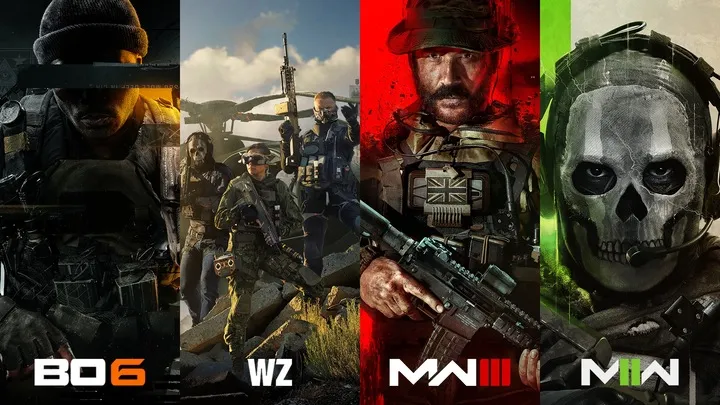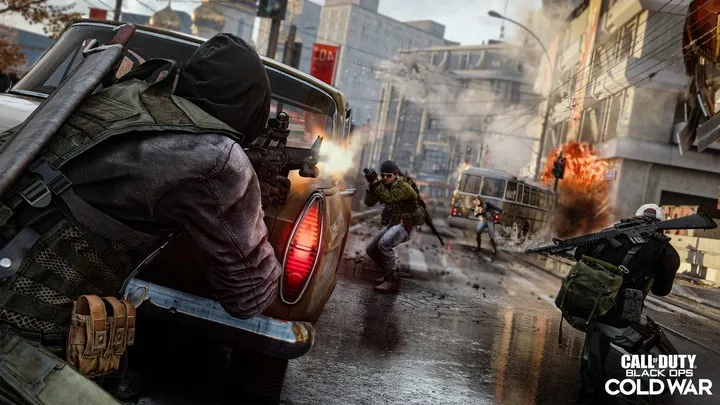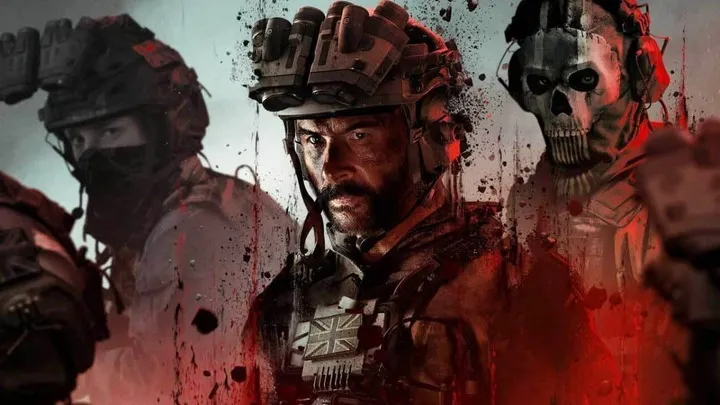Introduction
Call of Duty has cemented its place as one of the most iconic first-person shooter franchises in gaming history. Its fast-paced action, cinematic campaigns, and competitive multiplayer modes have captivated millions of players across the globe. But behind the explosive set pieces and adrenaline-pumping firefights lies a game of strategy, precision, and adaptability. Whether you’re stepping into your first lobby or you’re a veteran chasing prestige levels, mastering Call of Duty requires more than good reflexes. You must understand map layouts, weapon balance, movement mechanics, team dynamics, and the psychology of your opponents. This comprehensive guide will give you the knowledge and tools you need to dominate every match, improve your stats, and enjoy the game at a higher level.
1. Understanding Core Mechanics and Controls
Before you can outgun opponents, you need a rock-solid grasp of the core mechanics. Call of Duty games are designed to be accessible, but their simplicity masks layers of depth. The most fundamental elements—aiming, shooting, and movement—are areas where small improvements yield massive gains.

Start by adjusting your sensitivity settings. High sensitivity allows quicker turns, which can save your life in close encounters, but too high and your aim will become erratic. Many pro players recommend finding a “sweet spot” where you can comfortably track enemies without overshooting. Experiment in a private match or training area until your muscle memory develops. Consider fine-tuning options like aim response curve or dead zones if your version of Call of Duty supports them.
Movement is equally important. Walking, sprinting, and crouching all influence your visibility and noise profile. Sprinting gets you across the map faster but leaves you vulnerable during animation delays. Crouching or walking reduces noise, perfect for stealthy flanks. Practice combining movement with aim: strafing while firing makes you a harder target, and sliding into cover can give you a positional advantage. Mastering these basics will ensure you’re always in control of your engagements.
2. Mastering Weapon Loadouts and Attachments
Your weapon loadout defines your playstyle. Shotguns dominate close quarters, assault rifles provide balanced performance, and sniper rifles excel at long range. The Gunsmith system lets you customize weapons with attachments—optics, barrels, grips, stocks—that dramatically affect performance. Understanding these trade-offs is key to building the perfect loadout.
For aggressive players, submachine guns paired with lightweight stocks and recoil-reducing grips can turn you into a flanking menace. If you prefer holding lanes, assault rifles with precision optics and stabilizing underbarrels can give you consistent accuracy. Don’t neglect your secondary weapon; a reliable pistol can save you when reloading under pressure. Lethal and tactical equipment, like Semtex grenades or stun grenades, add another layer of control.
Perks are equally important. Choosing Ghost can hide you from UAVs, while Tracker reveals enemy footprints for sneaky pursuits. Experiment with different combinations to find what complements your strengths. Remember that Call of Duty’s meta changes over time as weapons are balanced, so revisit your loadouts regularly to stay competitive.
3. Map Awareness and Positioning Strategies
Maps are the battlefield, and knowledge of their layout can be the difference between victory and defeat. Every Call of Duty map has choke points, flanking routes, and power positions. Learning these is critical. Start by playing slower, observing traffic patterns, and noting common engagement areas. Over time, you’ll predict where enemies will appear based on spawn logic and game mode objectives.
Positioning yourself wisely gives you an advantage. Holding head-glitch spots (where only your head is exposed) or pre-aiming high-traffic corridors can net easy kills. But don’t become predictable; staying in one spot too long invites flanks or grenades. Rotating around the map after a few kills keeps you unpredictable and maintains map control.
Use your mini-map actively. Every unsuppressed shot appears as a red dot, giving you free intel. Pay attention to UAV sweeps and teammate positions to infer where enemies might be lurking. Combine this with audio cues—footsteps, reload sounds—to stay one step ahead.
4. Movement Techniques and Advanced Mobility
Movement in Call of Duty isn’t just about getting from point A to B; it’s a weapon. Advanced techniques like slide-canceling (where available), bunny hopping, and tactical sprinting allow you to outmaneuver opponents. Learn how to chain movements smoothly: sprint into a slide, ADS mid-slide, then jump out of cover for an unexpected angle. These small tricks make you harder to hit.
Mantling and climbing can create unexpected flanks. Many maps have ledges or structures you can vault to gain a vertical advantage. Use verticality to break sightlines and surprise enemies. Similarly, dolphin diving or drop-shotting (going prone while shooting) can throw off an opponent’s aim in critical moments.
Practicing movement in private matches or custom games helps develop muscle memory without the pressure of real matches. The smoother and more unpredictable your movement, the more frustrated your opponents will become.
5. Multiplayer Mode Tips and Objective Play
Different game modes demand different mindsets. Team Deathmatch rewards pure slaying ability, but objective modes like Domination or Hardpoint require smarter positioning and teamwork. In Domination, holding two flags is usually enough; overextending for a triple-cap can flip spawns and backfire. In Hardpoint, rotating early to the next hill can secure crucial points.
Search and Destroy is slower and more tactical. Use sound cues and coordinate with teammates for coordinated pushes. Planting or defusing bombs requires patience—don’t rush unless the situation demands it. For Control or other hybrid modes, understand where choke points form and pre-position yourself to cut off enemy reinforcements.

Adapt your loadout to the mode. For objective modes, consider perks that increase survivability or equipment like smoke grenades to block sightlines. Always play the objective—kills mean little if your team ignores the goal.
6. Scorestreaks, Field Upgrades, and Equipment Usage
Scorestreaks can turn the tide of battle. UAVs reveal enemy positions, Precision Airstrikes clear objectives, and higher-tier streaks like Chopper Gunners or Gunships can decimate entire teams. Choose streaks you can realistically achieve based on your skill level and playstyle. A steady stream of mid-tier streaks is often more impactful than rarely hitting a high-tier one.
Field Upgrades like Trophy Systems or Dead Silence provide situational advantages. Trophy Systems can protect objectives from grenades, while Dead Silence allows silent movement for flanks. Use lethal equipment strategically: cook grenades before throwing to prevent escape, or use C4 to clear objectives. Tactical equipment like stuns or flashes can create openings for pushes.
Timing is critical. Deploy UAVs when your team is ready to push, or hold onto a Precision Airstrike for when enemies are clustered. Combining streaks with team pushes maximizes their effectiveness.
7. Communication and Team Coordination
Call of Duty is a team game at its core, and communication can elevate your performance. Use callouts to share enemy positions, announce your plans, or warn of incoming streaks. Even simple phrases like “two mid” or “rotating right” can save your teammates’ lives.
If you’re playing with friends, assign roles. One player can run UAV support, another can anchor spawns, while a third focuses on slaying. This division of labor ensures balance. For solo queue players, adapt to your teammates’ playstyle—if they’re aggressive, support them; if they’re passive, hold lanes to prevent flanks.
Don’t let frustration ruin coordination. Toxicity tilts teams and leads to sloppy plays. Stay calm, encourage your teammates, and focus on the objective. Good communication can turn even a team of strangers into a cohesive unit.
8. Advanced Gunfights and Combat Tactics
Winning gunfights isn’t always about who shoots first. Pre-aiming around corners, anticipating enemy movement, and strafing during engagements can give you the edge. Use cover intelligently: peek out just enough to take a shot, then retreat. Drop-shotting can throw off opponents’ aim, but don’t overuse it or you’ll become predictable.
Mind games are powerful. Fake a retreat to lure enemies into traps, or fire shots in one direction before flanking from another. Learn to read your opponents’ tendencies: if someone repeatedly rushes the same lane, pre-aim and punish them. If an enemy is camping, use grenades or flank routes instead of rushing head-on.
Engagement timing matters. Don’t challenge two enemies at once unless you have cover or a power position. Pick your battles, disengage when outnumbered, and re-engage on your terms.
9. Adapting to Different Game Modes and Updates
Call of Duty evolves constantly through patches, seasonal updates, and new content drops. A weapon that dominates one season might be nerfed the next. Stay informed by following patch notes or community discussions. Adapt quickly—don’t cling to a weapon or strategy that no longer works.
Different game modes offer unique experiences. Warzone demands battle royale tactics like loot management and gas circle awareness. Zombies focuses on survival and resource management. Limited-time events might introduce unusual rules or equipment—embrace these to expand your skill set.

Staying flexible keeps the game fresh and ensures you’re always competitive. Be willing to try new weapons, perks, and playstyles. The best players are those who evolve alongside the game.
10. Building Long-Term Skills and Maintaining Performance
Improvement in Call of Duty is a marathon, not a sprint. Regularly review your gameplay. Watch replays or streams to identify mistakes: Are you dying in predictable spots? Are you missing opportunities to rotate or support teammates? Learning from these moments accelerates growth.
Practice aim outside of matches. Tools like aim trainers or even the game’s own training modes can sharpen your reflexes. Build muscle memory through repetition until aiming and movement become second nature. Also, maintain your gear: a clean mouse or controller with responsive buttons can make a surprising difference.
Finally, manage your mindset. Tilt and frustration lead to poor decision-making. Take breaks, hydrate, and approach the game with a learning attitude. Over time, your consistency will improve, and victories will come naturally.
Conclusion
Call of Duty isn’t just about pulling the trigger—it’s about strategy, adaptability, and teamwork. By mastering the basics, perfecting your loadouts, learning maps, and refining your tactics, you’ll elevate your gameplay to new heights. Remember to communicate, stay flexible with updates, and practice consistently. Whether you’re grinding ranked playlists, exploring Warzone, or jumping into Zombies, these tips and guides will help you dominate every match. The battlefield is ever-changing, but with the right knowledge and preparation, victory is always within reach.

















